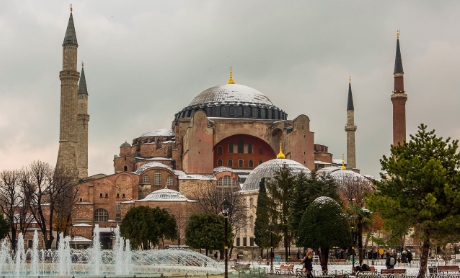I had to drive through a part of Birmingham Wednesday where I hardly ever go anymore. Years ago, I spent a good bit of time in that area. As a drove down a major road, my mind catalogued changes that have taken place in the 15 years or so since I regularly spent time there.
The O’Charley’s that was the popular brand-new mid-priced restaurant in the area about 15 years ago was closed and the building was in disrepair. What had once been a Pizza Hut where my ex-wife and I used to spend a lot of time was now a run-down title pawn store. A home supply store where I bought live Christmas trees for a number of years was closed and the building was crumbling from lack of use. There was example after example of this along the highway.
I was surprised to find myself feeling a little disoriented from seeing it all.
My rational brain understands that retail buildings are thrown up as cheaply as possible to serve the purposes they’re intended for. If a building needs to project an air of solidity and permanence, the building’s facade might be stone or be made of something else designed to look like something that will last. But underneath, today’s commercial buildings are cheap and intended to be thrown away in just a few years, after they’ve served their brief commercial purposes.
As I looked at those decaying and abandoned buildings, it occurred to me why I’m so strongly attracted to old buildings that are still in good repair and still in use. I find them charming and oddly alluring, wherever I find them. For instance, Hagia Sophia, pictured above, was built as a church in 537 AD. It spent most of its history as a church and then became a mosque. Today, it’s a museum. I’d like to visit it someday.
In a world where so much seems to fade away quickly — even by design — there’s something comforting about things that have stood the test of time and suggest to us that they’ll always be here.
The world is changing faster than ever today. Everything is instant. Everything that’s “new and improved” is valued over what’s old and proven. Almost everything is shallow. Nothing seems to last.
Are there advantages to this? Of course. We can have less-expensive experiences in cheap buildings with nice facades than we can have in buildings that are built to last. If I’m having a meaningful romantic dinner with a woman I love, is the experience any more real or meaningful if it’s in a building that will still be standing and in use in a couple hundred years? I don’t suppose so.
On the other hand, I’m becoming more and more aware of the throwaway nature of the world around me. Although I understand it makes sense, I’m uncomfortable with it. There’s something in me that’s longing for things that last — things that will be around for hundreds or thousands of years after I die. I don’t know why. I just know that I’m less and less comfortable with the rational throwaway nature of modern life — and that I crave things that seem solid and built to last.
I suspect that more people are starting to feel this, even if most of them aren’t sure what’s wrong. I suspect that most of us are craving for things that will last.
I want to know that the places I love will last. I want to know that the things that mean something to me will mean something to someone else in the future. And more than anything, I want to give and receive love that I feel will last. It’s all about relationships — with the people, places and environments we’re a part of.
When I die, I think I’ll feel as though something is missing if all the people and places I’ve loved have moved on or been displaced by “new and improved” places that will similarly serve to last for a brief hour or two and then fade away. I need to know that something is going to last, at least for awhile.
For some of us, the real hope of something that lasts comes from our faith that there’s a God who made us and who we will one day know after this life is over. In the meantime, though, if this life is to have meaning to us, we need things that last, at least more than a few years.
I don’t know how to make this happen. I don’t know that there are enough others for whom this would matter enough to figure it out. I just know that I’m increasingly uncomfortable with a world where the facades say one thing, but the cheap underpinnings betray something else. It somehow feels dishonest.
I want things that last, even if it’s just a beautifully built home that might stand for hundreds of years. Is it worth the money to build? To most people, probably not. For me, though, finding a way to build something that will last — with people, places and environments — would go a long way toward making the world a more rich and satisfying place.

 God may be working on what we need long before we can see it
God may be working on what we need long before we can see it If you’re driven to create beauty, you’re an artist — like it or not
If you’re driven to create beauty, you’re an artist — like it or not Tools don’t make you great artist, but tools can change how you feel
Tools don’t make you great artist, but tools can change how you feel